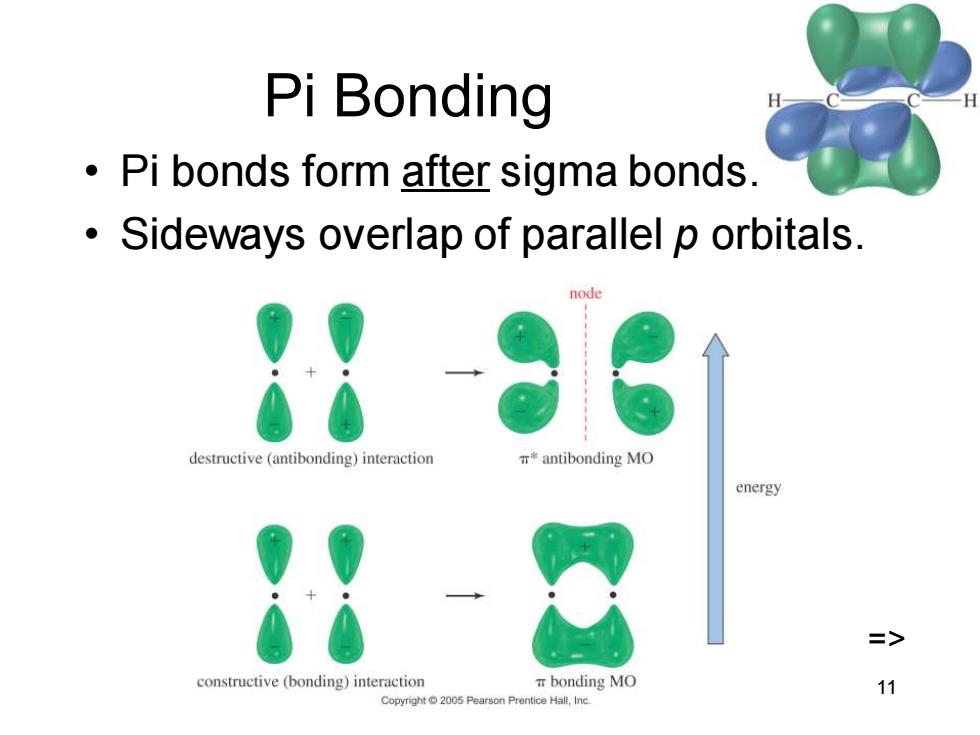
Pi Bonding Pi bonds form after sigma bonds. Sideways overlap of parallel p orbitals. 0 node destructive(antibonding)interaction antibonding MO energy => constructive (bonding)interaction T bonding MO 11 Copyright2005 Pearson Prentice Hall,Inc
Chapter 2 11 Pi Bonding • Pi bonds form after sigma bonds. • Sideways overlap of parallel p orbitals. =>
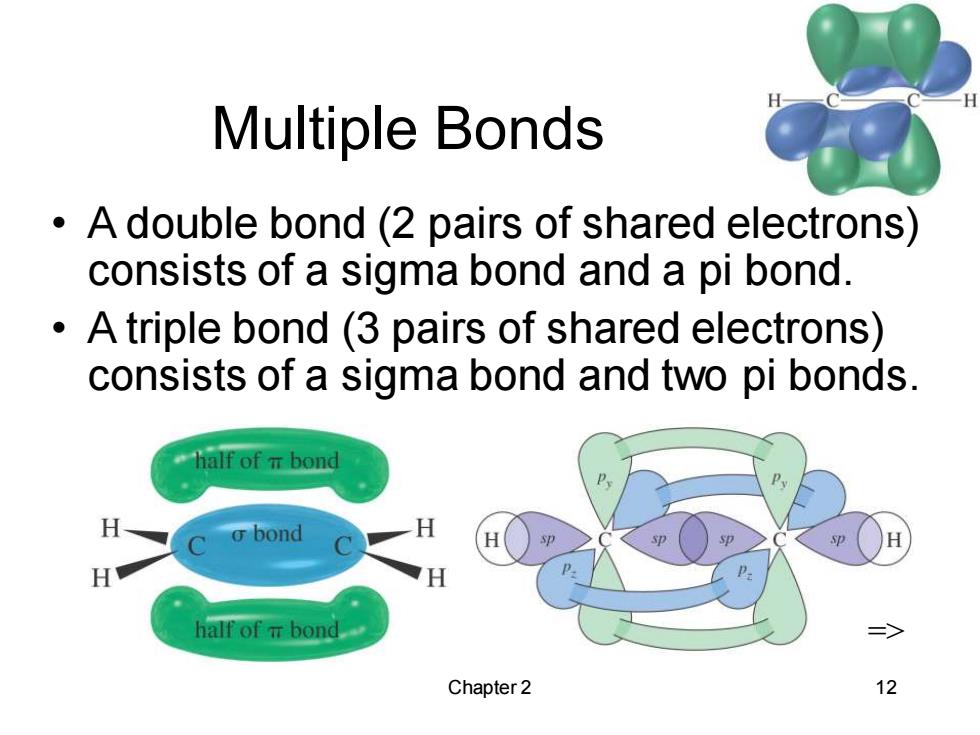
Multiple Bonds A double bond (2 pairs of shared electrons) consists of a sigma bond and a pi bond. Atriple bond (3 pairs of shared electrons) consists of a sigma bond and two pi bonds. half of m bond o bond half of T bond Chapter 2 12
Chapter 2 12 Multiple Bonds • A double bond (2 pairs of shared electrons) consists of a sigma bond and a pi bond. • A triple bond (3 pairs of shared electrons) consists of a sigma bond and two pi bonds. =>
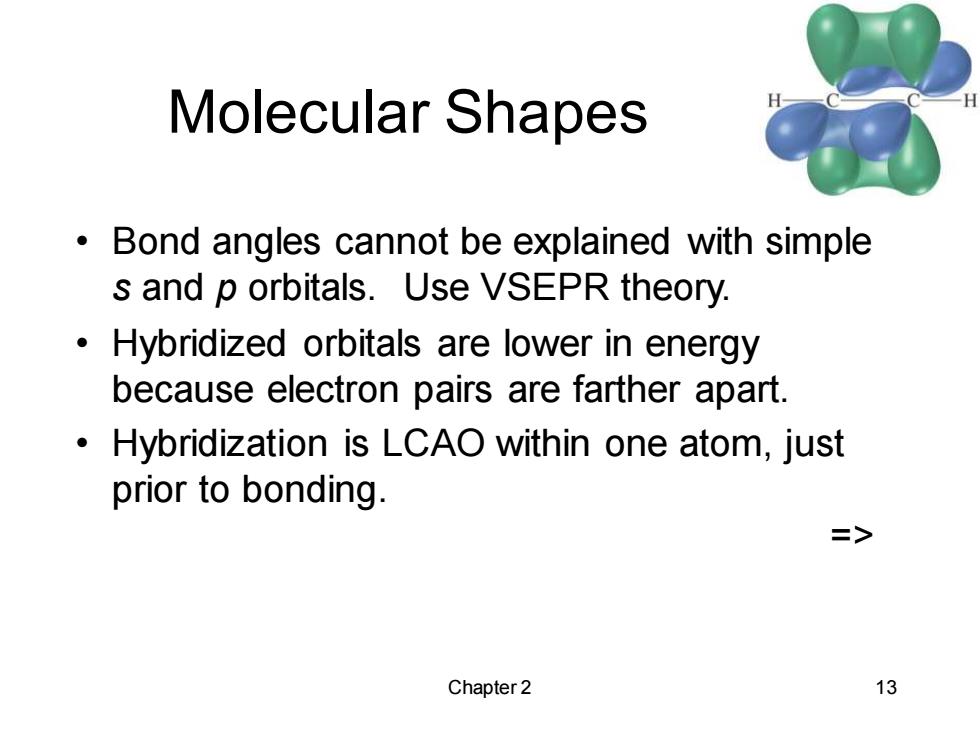
Molecular Shapes Bond angles cannot be explained with simple s and p orbitals.Use VSEPR theory. Hybridized orbitals are lower in energy because electron pairs are farther apart. Hybridization is LCAO within one atom,just prior to bonding. => Chapter 2 13
Chapter 2 13 Molecular Shapes • Bond angles cannot be explained with simple s and p orbitals. Use VSEPR theory. • Hybridized orbitals are lower in energy because electron pairs are farther apart. • Hybridization is LCAO within one atom, just prior to bonding. =>
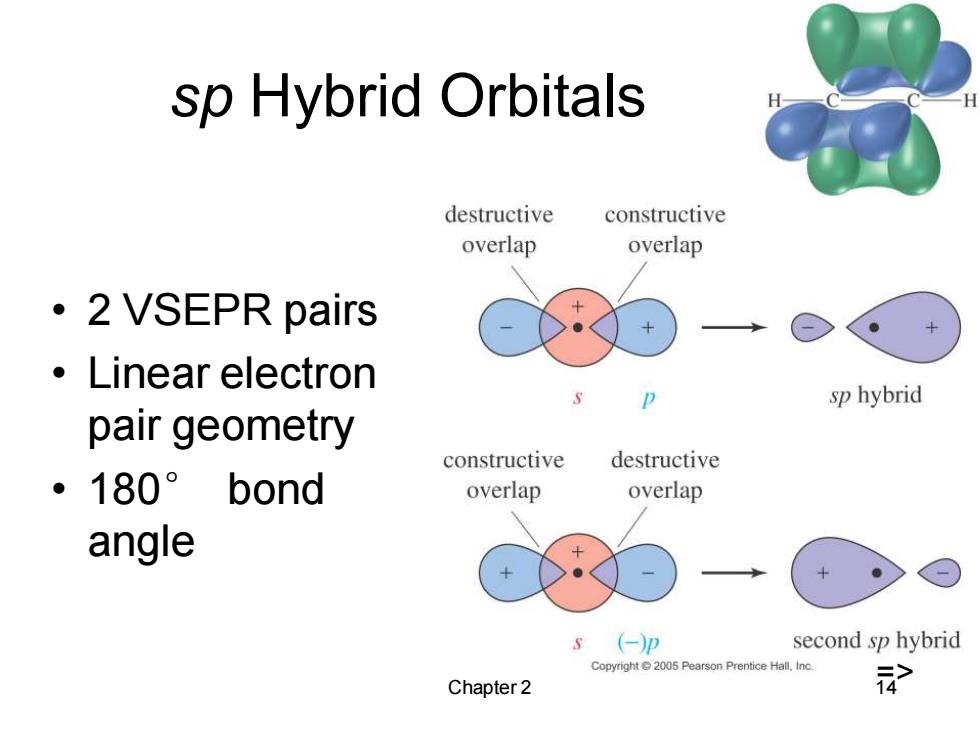
sp Hybrid Orbitals destructive constructive overlap overlap ·2 VSEPR pairs ·Linear electron sp hybrid pair geometry constructive destructive ·180°bond overlap overlap angle second sp hybrid Copyright 2005 Pearson Prentice Hall,Inc. Chapter 2
Chapter 2 14 sp Hybrid Orbitals • 2 VSEPR pairs • Linear electron pair geometry • 180° bond angle =>
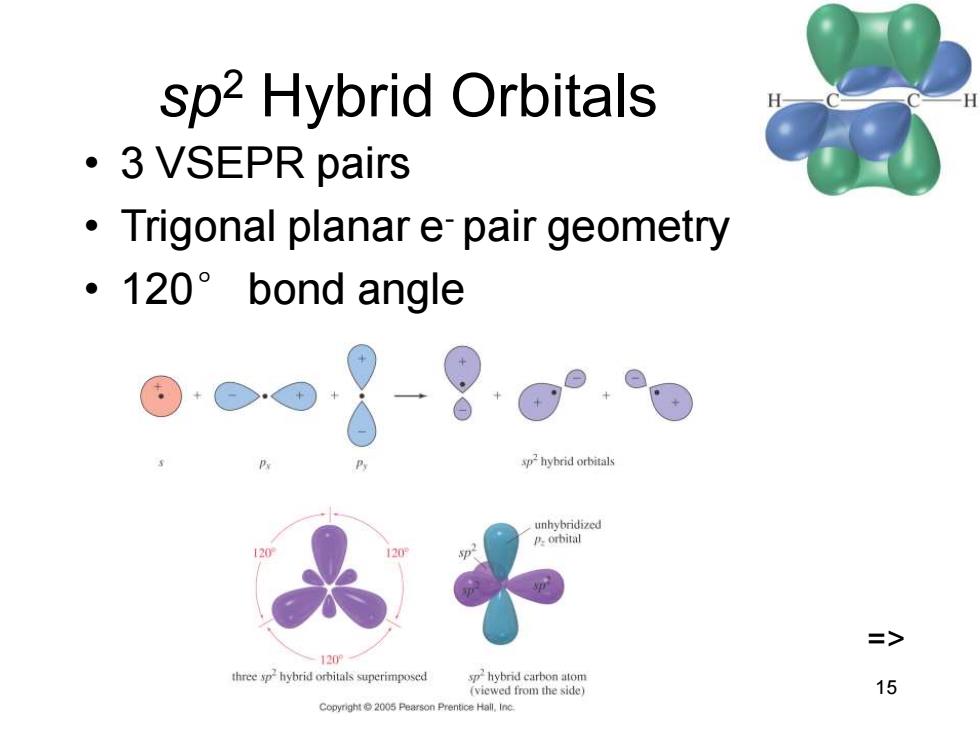
sp2 Hybrid Orbitals ·3 VSEPR pairs Trigonal planar e pair geometry ·120°bond angle phybrid orbitals unhybridized p.orbital => three sphybrid orbitals superimposed sphybrid carbon atom (viewed from the side) 15 Pearson Prentice Hall.Inc
Chapter 2 15 sp2 Hybrid Orbitals • 3 VSEPR pairs • Trigonal planar e- pair geometry • 120° bond angle =>